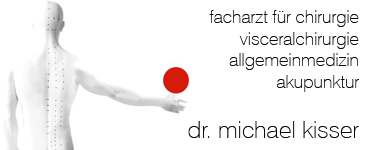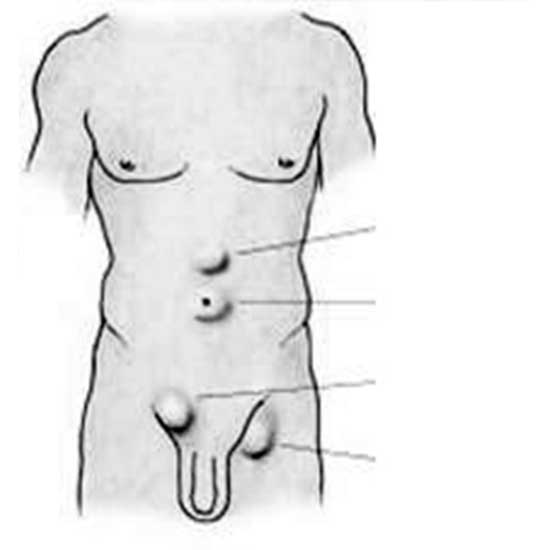Depending on the location of the hernias, they are called:
- Upper abdomen hernia
- Inguinal hernia
- Incisional hernia
- diaphragmatic hernia
When symptoms occur, it is best to seek surgery. Hernias only tend to get bigger over time.
There are a number of different methods of surgery for hernias. In our practice in Vienna, we will decide together with you, which procedure is most suitable for you.
Dr. Kisser will be your surgeon.
Umbilical hernia:
The navel is a natural weak spot caused by the remainders of the umbilical cord. For adults, an umbilical hernia is relatively common. Often, those patients have no painful symptoms, thinking that their navel is simply outwardly shaped.
“Swollen Navel and pain that increases with physical activity”
An umbilical hernia with a small hernial ring may result in organs getting stuck, which can cause great pain. Most surgeries use mesh to seal the opening and prevent any reoccurrence. For small hernia rings, it is better to stitch up the opening.
Upper abdomen hernia:
A diaphragmatic hernia epigastric hernia: Often the abdominal muscles are weak, developing a hole. We highly recommend surgery, which will be done either using mesh or stitching to seal the hernia shut.
Scar hernia:
Scar hernias happen because of abdominal incisions and can unfortunately not always be avoided. Many of them only appear years after a surgery. If the scar on the abdominal wall lacks stability, it can form a gap.
Patients report painful swellings, especially with physical activity. If anything gets incarcerated in this gap, it leads to great continuous pain.
Those hernias mostly only get larger over time and should, therefore, be surgically treated as early as possible. There is no possibility of spontaneous recovery. Unfortunately, many patients wait too long, making the surgery much more complicated than it would have to be.
“Dr. Kisser will perform the surgery on you himself”
The surgery can be done both using laparoscopy and incisions. Ten days of rest are recommended. After that, physical activity can be done as always.
Risks and long-term results:
Even after a perfect surgery, a hernia can reoccur from heavy physical strain.



